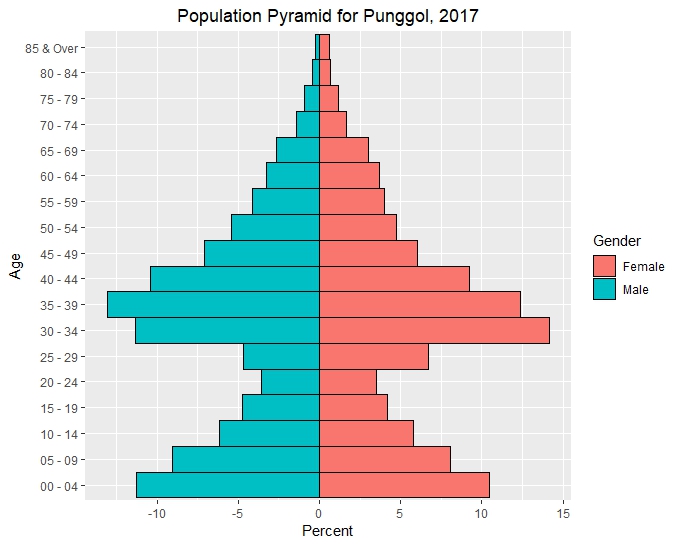Country Stock Market Performance Choropleths with Leaflet for R
Introduction
Choropleths allow the display of statistical variables on shaded regions of maps. For example the GDP of countries or states can be displayed with different color levels. We usually display data according to the geographical administrative subdivision; country, region, state, county, etc. as these are common definitions shared by everyone and statistics are usually available. A judicious choice of color palette will allow us to present the data coherently. For example, GDP data where growth can be positive or negative - a contrasting scale like Red-Yellow-Green will allow better representation compared to a blue only scale.
Data
For our choropleth we will display the country ETF performance from based on the list established by Seeking Alpha. Note that these are country ETFs that represent the performance of a basket of stocks from a certain country and do not necessarily match the performance of the country’s main stock index which may track a different basket of stocks. With the list of tickers we can download the price information using the tidyquant package. We will also need the spatial polygons of various countries in order to create our choropleth. This is available online, for example from Natural Earth Data. This link will start the download on your browser. The spatial data is also available on the post’s github repository.The unzipped folder should be placed in the working directory. The rgdal library is required to read the file.
library(tidyverse)
library(rgdal)
etf<-read.csv('country_etf.csv')
world <-readOGR("./ne_50m_admin_0_countries",
'ne_50m_admin_0_countries', verbose = FALSE)
Using tidyquant we can download the ETF price data from providers like Yahoo using the function tq_get. tidyquant is compatible with tidyverse as all functions return tibblesand we can use commands like group_by. tq_transmute with the function periodReturn set to monthly produces a new tibble which is resized to the new period.
library(tidyquant)
Price<-etf$Ticker %>%
tq_get(get="stock.prices",
from="2018-01-01",
to="2018-07-31") %>%
group_by(symbol)
gain_m<-Price%>%
tq_transmute(selected=adjusted,
mutate_fun=periodReturn,
period="monthly",
col_rename="R_monthly"
) %>%
filter(row_number()==n())
gain_m$R_monthly<-gain_m$R_monthly*100
We then merge the datasets. Our returns need to be merged with the shape polygon in order to display the stock returns by country:
gain_m<-merge(etf,gain_m,by.x='Ticker',by.y='symbol')
world_etf <- merge(world, gain_m, by.x="NAME",by.y ="Country")
Choropleth
The R leaflet package allows us to control the popular leaflet JavaScript library without writing any code in Java. The package allows us to plot many geospatial visualizations, including choropleths. The choropleth can be set to display information when clicked. We create Popup to display the country name and monthly performance.
# Create a popup that displays monthly performance.
Popup <- paste0("<strong>Country: </strong>",
world_etf$NAME,
"<br><strong> Monthly performance: </strong>",
round(world_etf$R_monthly,1), "%")
colorNumeric with palette RdYlGn is used to create a color scheme for the different stock returns. We want the palette to be symmetric about zero. In order to achieve this, we need to provide an interval that is centered around zero to the parameter domain of colorNumeric. We achieve this by extending the original domain of the data that we want to plot, depending if the negative or positive component is larger.
library(leaflet)
dom= na.omit(world_etf$R_monthly)
a=max(abs(min(dom)),max(dom))
monPal <- colorNumeric("RdYlGn", domain =c(-a,a), n=20)
We can then use the leaflet function to map our data. The addTiles function calls the tile from OpenStreetMap by default. The function addPolygons is where we specify how the country polygons should be added. fillColor is set to map monthly returns based on monPal.
leaf_world_etf <- leaflet(world_etf) %>%
addTiles(options=tileOptions(opacity=0.6)) %>%
setView(lng = 20, lat = 15, zoom = 2) %>%
addPolygons(fillOpacity = 0.6,
fillColor =~monPal(R_monthly),
color = "white",
weight = 1,
opacity=1,
dashArray = "",
layerId = ~Ticker, popup = Popup) %>%
addLegend("bottomright", pal=ytdPal,
values=~na.omit(R_monthly),
title = "Monthly Performance %",
opacity = 0.6
)
leaf_world_etf
Our choropleth is now ready. Notice that the color legend has yellow for zero. If we did not provide an interval centered around zero to domain for colorNumeric, there would have been an offset which can confuse users. Clicking on the various countries will display the country name and monthly performance in a pop-up. The user can zoom in/out and also pan the display for more information.
Note that the html-widget does not pull fresh the data so our choropleth will reflect the stock performance for the month of July 2018. A table would probably be more efficient to display stock monthly gains, but in our case we are just using the data to illustrate how choropleths work.



